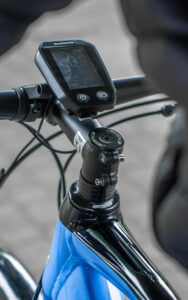When an E-Bike is not an E-Bike
E-bikes are selling at record levels across the country, with 2022 sales expected to double 2020. They serve many people by providing recreation and transportation when health, age, or hills prevent cyclists from riding. NH was the 23rd state in the country (now 36) to make e-bikes “legal” (thanks to BWANH in 2019 via HB-148) by codifying the “three classifications,” but a lot of confusion remains. The NH law specifies use and restrictions of Class 1, 2, and 3 e-bikes on roads and rail trails while use on natural surface trails and in state / national parks plus municipally-owned properties varies widely. This leaves e-bike users confused – and signage has proven not to work. We recommend checking with the property owner or management to learn about allowed off-road access. However, that is not the main problem we see – it is about what some people call “e-bikes” that are not “e-bikes.”
As defined by Federal law and manufacturers, any electric bicycle having a motor more powerful than one horsepower (750 watts) and “assisted speed” greater than 28 MPH is classified as an “Out of Class Electric Vehicle” (OCEV) or “Off-Highway Recreational Vehicle” (OHRV). They can be used on private lands, OHRV parks, or designated trails but not on roads or rail trails. Currently no license or registration is required, so users are viewed as bicyclists whereas they should be subject to rules for mopeds or motorcycles. Identifying one class of e-bike from another or an OCEV versus a “true” e-bike is usually difficult and enforcement is nearly non-existent. As such, we see OCEVs used about anywhere because riders “can get away with it” while giving e-bikes in general a bad name. A recent article in the Bloomburg Press highlights this world-wide problem.
Another problem facing primarily bicycle clubs and advocacy groups around the country is that insurance from American Specialty via the League of American Bicyclists excludes coverage for Class 2 e-bike users, as a throttle button can activate the small motor, providing a maximum electric-only speed of 20 MPH. The insurance underwriter views such e-bikes as “motor vehicles” so any incident would not be covered regardless of the throttle being used or not. If a motorist crashes into a Class 2 e-bike rider from the rear, there is no coverage. If a Class 2 e-bike rider crashes with a person on a conventional bike, neither person has insurance coverage because “the motor” could have been the cause of the crash. Note that one of the largest and best-known e-bike manufacturers in the world (Pedego) only makes and markets Class 2 e-bikes. This position of the insurance company has led bike clubs to prohibit Class 2 e-bikes on all rides or at least to inform members that no insurance coverage is provided. And since Class 1, 2 and 3 e-bikes are difficult to distinguish from each other, many clubs simply ban all e-bikes on their rides. The national goal of LAB and People for Bikes of “getting more people on more bikes more often” cannot be achieved when true Class 2 e-bikes are considered motor vehicles. We hope the insurance industry will recognize the Federal e-bike classifications and allow all “true” e-bikes to be considered bicycles.



